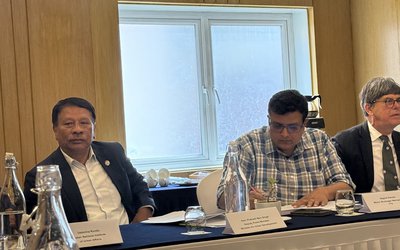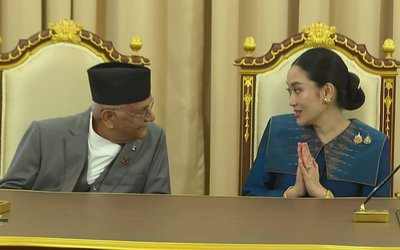This is a follow up article on COP24, looking at the major outcomes and the effectiveness of Nepal’s participation.
After two weeks of intense negotiations, parties had reached a decision om most parts of the Paris Agreement Rulebook, for putting the Agreement into practice to flight climate change. This includes how governments will measure, report on and verify their emissions-cutting efforts.
The outcome on the Rulebook sends a clear signal of the global community’s intent to continue move forward on the urgent task of addressing climate change. However, the key question remains that how the countries will step up their targets on cutting emissions? The outcome is also not clear on different ways of providing financial aid to the climate vulnerable poor countries.
On current targets, the world is set for 3 degrees Celsius above pre-industrial levels by 2100, which scientists say would be disastrous, resulting in mass migration and displacement caused by drought, floods, sea level rises, heat and cold waves, hunger, disease and conflict.
What did Nepal do in COP24? Did Nepal make informed participation and strong influence?
Nepal did raise the issues about the impact of climate change. Although Nepal is a low-carbon emitting country, it is suffering from the problem of melting glaciers, the snow-capped Himalayas were turning rocky and devoid of snow cover and the possibility of glacier melting has increased. The Government of Nepal plans to develop and implement model project on climate change as well as design and implement adaptation and mitigation action plans, the President mentioned in her statement in the inaugural session.
Despite a jumbo presence of 24 people in COP24, Nepal’s participation was not very effective. Nepal could not organize any side event and there was no Nepal Pavilion. There was no coordination with Green Climate Fund, despite it has a Nepali representative, nor Nepal used knowledge and experience of Nepali participants in the forum. It was a missed opportunity.
The UN Framework Convention, the Kyoto Protocol and the Paris Agreement clearly recognize the special circumstances and needs of the LDCs and this recognition must be adhered to in every delivery mechanism of the climate finance. There was a lack of proactive measure on the part of Nepal to go with the LDC Group to negotiate as a bloc at COP24 to effectively represent their collective needs.
Now we need immediate and collective action. Governments, the business community, and civil society must put their attention to the implementation through policies, investments and dedicated action. The UN Climate Summit in Sept 2019 is now positioned as a critical juncture for world leaders to articulate how their next national climate plans will respond to IPCC report.
Nepal should continue to push on capacity building of LDCs adapting to climate change, transferring technology, ensuring research, education and training, gender-responsive climate policy, improving communications and negotiation skills. There should be follow up missions on access to climate change finance ensuing Nepal gets adequate support to invest in climate solutions and adapt to climate impacts.
- World Humanitarian Day 2024: Committing to Peace and Accountability
- Aug 19, 2024
- Nepal Investment Summit: Unlocking Economic Potentials For Growth And Development
- Apr 28, 2024
- Investing In Women: Accelerating Progress
- Mar 10, 2024
- Embracing The 'Empty Chair: Advancing Global Inclusivity And Equitable Development
- Dec 29, 2023
- Mental Health In Youth
- Jul 16, 2023















